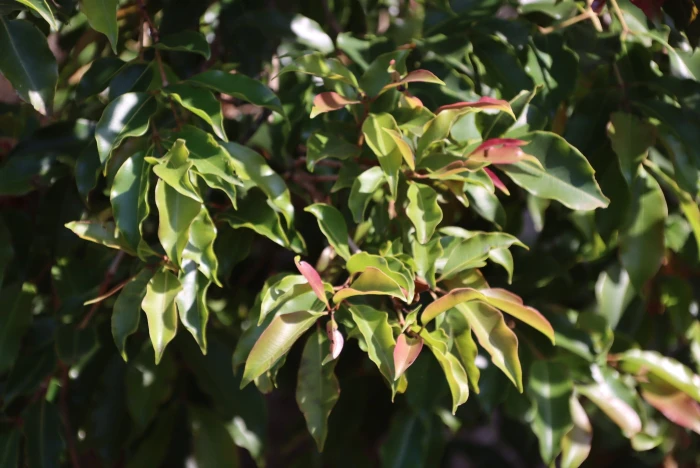Forest Waterwood
(Syzygium gerrardii)
Forest Waterwood (Syzygium gerrardii)
/
/

Tony Rebelo
CC BY-SA 4.0
Image By:
Tony Rebelo
Recorded By:
Copyright:
CC BY-SA 4.0
Copyright Notice:
Photo by: Tony Rebelo | License Type: CC BY-SA 4.0 | License URL: http://creativecommons.org/licenses/by-sa/4.0/ | Rights Holder: Tony Rebelo | Publisher: iNaturalist | Date Created: 2023-10-28T14:26:52-07:00 |





Estimated Native Range
Climate Requirements for South Pasadena, California
| This Plant | Your Site | Plant Suitability for Your Location | ||
|---|---|---|---|---|
| • Precipitation | 21" - 56" | 18" | Your precipitation may be insufficient for this plant. Irrigate N" / year. | Irrigate N" / year |
| • High Temp. | 70°F - 95°F | 90°F | Your summer temperatures are normal for this plant. | Excellent |
| • Low Temp. | 36°F - 57°F | 43°F | Your winter temperatures are normal for this plant | Excellent |
This plant should grow well at your location with about N inches per year (Y minutes per month) of irrigation.
Summary
Syzygium gerrardii, commonly known as Forest Waterwood, Hill Cherry, Forest Waterberry, or Red Water Wood, is an evergreen tree native to the moist forest margins, riverine thickets, and woodland areas of Southern Africa. It typically grows at a moderate rate to a height of 20-40 feet (6-12 meters) and a width of 20-30 feet (6-9 meters). The tree features a dense, rounded to spreading canopy with glossy, dark green leaves. Its white, showy flowers bloom in the summer, attracting various pollinators, followed by edible purple to black berries that are favored by birds.
Syzygium gerrardii is valued for its ornamental qualities, including its attractive foliage, fragrant flowers, and edible fruit. It is suitable for use as a shade tree, in screen plantings, and as part of mixed borders in larger landscapes. This species prefers full sun to part shade and thrives in medium or fast-draining loam or clay soils. It requires medium amounts of water and benefits from regular pruning to maintain its shape and encourage flowering. While it is generally low-maintenance, it can be susceptible to root rot in poorly drained soils. In regions where it is not native, Syzygium gerrardii can become invasive, so it is important to consult local regulations before planting.CC BY-SA 4.0
Syzygium gerrardii is valued for its ornamental qualities, including its attractive foliage, fragrant flowers, and edible fruit. It is suitable for use as a shade tree, in screen plantings, and as part of mixed borders in larger landscapes. This species prefers full sun to part shade and thrives in medium or fast-draining loam or clay soils. It requires medium amounts of water and benefits from regular pruning to maintain its shape and encourage flowering. While it is generally low-maintenance, it can be susceptible to root rot in poorly drained soils. In regions where it is not native, Syzygium gerrardii can become invasive, so it is important to consult local regulations before planting.CC BY-SA 4.0
Plant Description
- Plant Type: Tree
- Height: 20-40 feet
- Width: 20-30 feet
- Growth Rate: Moderate
- Flower Color: White
- Flowering Season: Summer
- Leaf Retention: Evergreen
Growth Requirements
- Sun: Full Sun, Part Shade
- Water: Medium
- Drainage: Medium, Fast
Common Uses
Bee Garden, Bird Garden, Edible*Disclaimer: Easyscape's listed plant edibility is for informational use. Always verify the safety and proper identification of any plant before consumption., Showy Flowers
Natural Habitat
Moist forest margins, riverine thickets, and woodland areas
Other Names
Common Names: Hill Cherry, Forest Waterberry, Red Water Wood
Scientific Names: Syzygium gerrardii, Acmena gerrardii, Acmena gerrardii, Eugenia gerrardii, Syzygium guineense, Syzygium guineense subsp. gerrardii
GBIF Accepted Name: Syzygium gerrardii